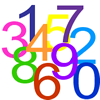Skip over navigation

Polygon Rings
Shifting Times Tables
Semi-regular Tessellations
Using Geogebra
Quad in Quad
Surprising Equalities
Pentagon Construction
Fantastic Fractals

Or search by topic
Number and algebra
Geometry and measure
Probability and statistics
Working mathematically
Advanced mathematics
For younger learners
Dynamic Explorations

Dynamic Explorations
Mathematicians often use tools to help them to make discoveries. The problems in this feature encourage you to use dynamic geometry and other interactive tools to explore, pose questions, make conjectures and prove ideas.
Polygon Rings Age 11 to 14Challenge Level 


Age 11 to 14
Challenge Level 





Join pentagons together edge to edge. Will they form a ring?
Shifting Times Tables Age 11 to 14Challenge Level 


Age 11 to 14
Challenge Level 





Can you find a way to identify times tables after they have been shifted up or down?
Semi-regular Tessellations Age 11 to 16Challenge Level 


Age 11 to 16
Challenge Level 





Semi-regular tessellations combine two or more different regular polygons to fill the plane. Can you find all the semi-regular tessellations?
Using Geogebra Age 11 to 18
Age 11 to 18
Never used GeoGebra before? This article for complete beginners will help you to get started with this free dynamic geometry software.
Quad in Quad Age 14 to 18Challenge Level 


Age 14 to 18
Challenge Level 





Join the midpoints of a quadrilateral to get a new quadrilateral. What is special about it?
Surprising Equalities Age 14 to 18Challenge Level 


Age 14 to 18
Challenge Level 





Take any triangle, and construct squares on each of its sides. What do you notice about the areas of the new triangles formed?
Pentagon Construction Age 16 to 18Challenge Level 


Age 16 to 18
Challenge Level 





Follow the instructions to create a regular pentagon. Can you prove it is indeed regular?
Fantastic Fractals Age 11 to 18
Age 11 to 18
You may also like
Patterns in Number Sequences
These resources are designed to get you thinking about number sequences and patterns.

